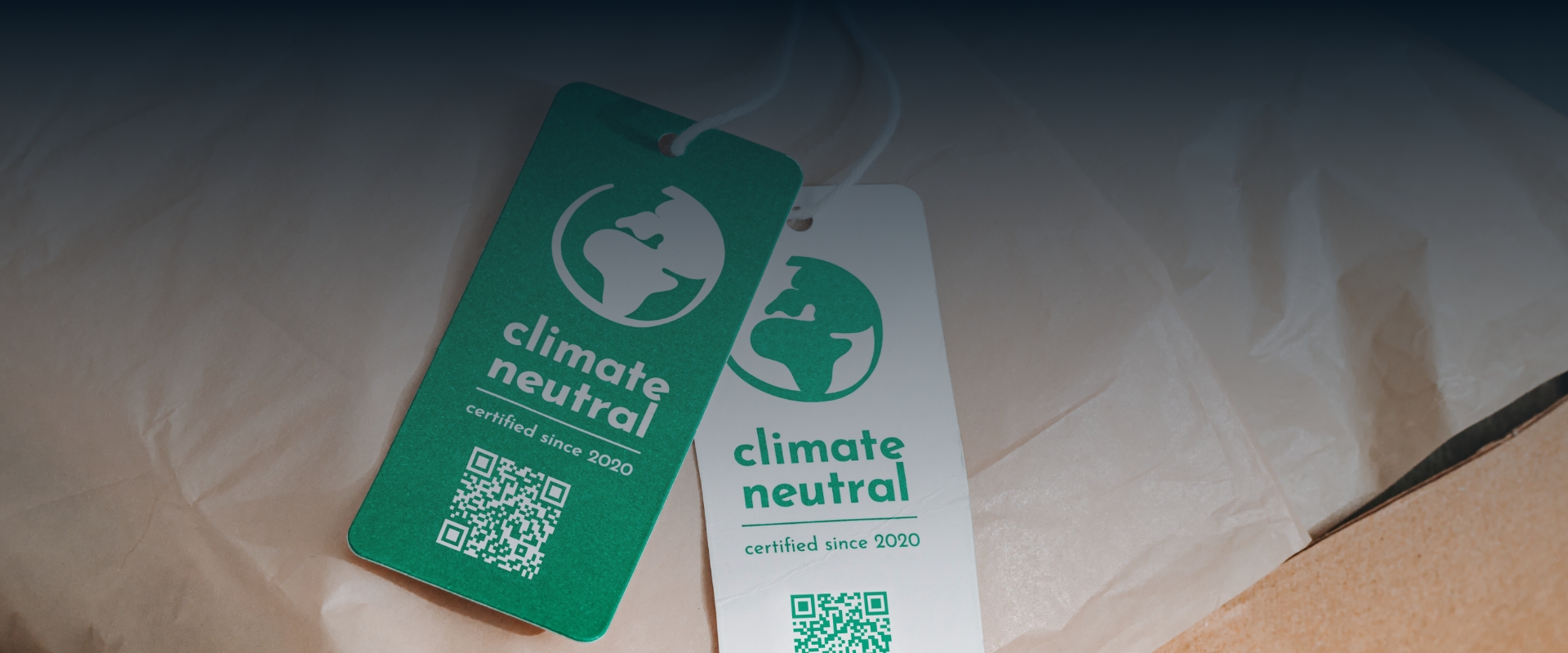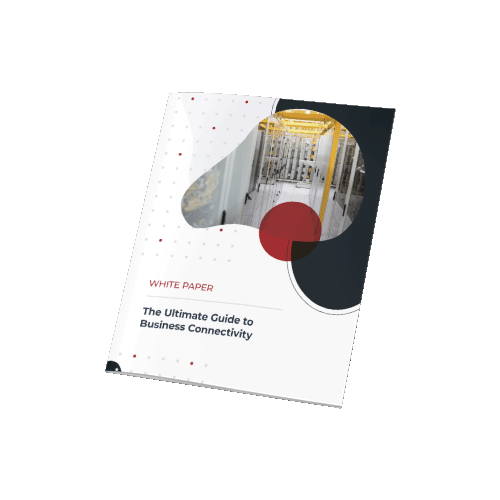Publish on: 16 September 2024 at 16:34
Table of contents
What is the Difference between Carbon Neutral and Net Zero
In the search for sustainability with the hopes of combating climate change, terms like “carbon neutral” and “net zero” are frequently thrown around. Although they are often used interchangeably, they represent distinct concepts with unique implications. Understanding the difference between these terms is crucial for businesses, policymakers, and individuals committed to reducing their environmental impact. This article will explain the differences between carbon neutral and net zero, explaining their definitions, how they are achieved, their scope, and their long-term goals.
Understanding Carbon Neutrality
Carbon neutrality refers to the concept of balancing the amount of carbon dioxide (CO2) emissions produced by an entity with an equivalent amount of CO2 removal or offsetting. The objective of achieving carbon neutrality is to ensure that the net carbon emissions of the entity equal zero. However, it’s important to note that this does not necessarily imply reducing emissions directly at their source. Instead, the focus is often on compensating for emissions by investing in initiatives that remove or absorb an equivalent amount of CO2 from the atmosphere.
This concept is pivotal in the broader context of sustainability, as it provides a framework for entities to take responsibility for their carbon footprint. Carbon neutrality can apply to various levels, including individual products, activities, events, companies, or even entire countries. The idea is to acknowledge that while it may not always be feasible to eliminate all carbon emissions, it is possible to counterbalance them through various strategies.
How it’s Achieved
Achieving carbon neutrality typically involves two primary elements: reduction and offsetting. Both play a crucial role in balancing the scales of carbon emissions, though they operate in fundamentally different ways.
Reduction
The first and often most impactful step in achieving carbon neutrality is to reduce carbon emissions as much as possible. This can be accomplished through several means, including:
- Energy Efficiency: Enhancing energy efficiency within operations can significantly lower the amount of energy consumed, which in turn reduces the carbon emissions associated with energy production. This can involve upgrading to energy-efficient appliances, improving insulation in buildings, and optimising industrial processes.
- Adopting Renewable Energy Sources: Transitioning from fossil fuels to renewable energy sources like solar, wind, hydroelectric, and geothermal power is a powerful way to reduce carbon emissions. By generating energy from renewable sources, entities can drastically cut down their reliance on carbon-intensive energy production methods.
- Operational Practices: Improving operational practices to minimise energy waste and emissions is another critical strategy. This can include everything from optimising supply chain logistics to reducing travel by embracing virtual meetings.
Offsetting
Once emissions have been reduced as much as possible, the remaining emissions can be offset by investing in projects that either remove CO2 from the atmosphere or prevent it from being emitted in the first place. Offsetting can include:
- Reforestation Projects: Trees absorb CO2 as they grow, making reforestation a popular method for offsetting carbon emissions. By planting trees, companies can help withdraw carbon from the atmosphere, effectively balancing their emissions.
- Renewable Energy Projects: Investing in renewable energy projects, such as wind farms or solar power plants, can offset carbon emissions by displacing the need for fossil fuel-based energy. These projects not only help reduce current emissions but also contribute to a long-term shift towards a low-carbon economy.
- Carbon Capture and Storage Technologies: Advanced technologies that capture CO2 directly from the atmosphere or from emission sources and store it underground are another method of offsetting. These technologies are still developing but hold significant potential for helping achieve carbon neutrality.
Scope
The scope of carbon neutrality is primarily focused on CO2 emissions. While CO2 is the most common greenhouse gas, it is not the only one. Other significant greenhouse gases, such as methane (CH4) and nitrous oxide (N2O), may not be fully accounted for under carbon neutrality initiatives. This focus on CO2 is due to its prevalence and the availability of reliable methods for both measuring and offsetting CO2 emissions. However, this narrow focus can sometimes be a limitation, as it may overlook the broader impact of other greenhouse gases that contribute to global warming. The term can apply to specific activities, products, companies, or even entire countries.
Real-World Applications
The concept of carbon neutrality has been increasingly adopted in various real-world applications, reflecting the growing recognition of the need for climate action. Here are some examples:
Corporate Initiatives
Many companies are setting carbon neutrality as a goal in their sustainability strategies. To achieve this, they first assess their carbon footprint, including direct emissions (such as those from manufacturing) and indirect emissions (like those from suppliers and logistics). After identifying areas for emission reductions, companies often purchase carbon credits to offset the remaining emissions. These credits support projects that reduce or remove CO2 from the atmosphere, such as renewable energy installations or forest conservation efforts. This approach allows companies to claim carbon neutrality and demonstrate their commitment to environmental stewardship to customers, investors, and regulators.
Events
Events, whether large-scale like the Olympics or smaller conferences and gatherings, can also aim for carbon neutrality. Organisers typically start by calculating the total CO2 emissions associated with the event, including travel, accommodation, energy use, and waste. To offset these emissions, they might invest in renewable energy projects, reforestation initiatives, or other carbon reduction programs. Achieving carbon neutrality for an event not only mitigates its environmental impact but also raises awareness about sustainability among attendees and stakeholders.
Understanding Net Zero
Net zero is a more expansive and rigorous concept than carbon neutrality, as it addresses the full spectrum of greenhouse gas (GHG) emissions, not just carbon dioxide (CO2). While carbon neutrality primarily focuses on balancing CO2 emissions through reduction and offsetting, net zero encompasses a broader and more comprehensive approach. Achieving net zero means that the total amount of all greenhouse gases emitted—such as methane (CH4), nitrous oxide (N2O), and fluorinated gases—across all activities is equal to the amount removed from the atmosphere.
This balance is achieved through a combination of deep emission reductions and the implementation of removal strategies. Unlike carbon neutrality, which can be attained by offsetting CO2 emissions alone, net zero requires a systemic overhaul of how an entity operates, covering every source of emissions within the organisation, supply chain, and product lifecycle. The goal is to eliminate or drastically reduce all emissions before relying on offsetting measures for any remaining GHGs. This approach ensures that net zero not only neutralises an organisation’s impact on the climate but also drives substantial and lasting changes toward sustainability. Ultimately, net zero represents the highest level of commitment to mitigating climate change, demanding continuous efforts to reduce emissions and innovate in sustainability practices.
How It’s Achieved
Achieving net zero involves three primary strategies: reduction, removal, and offsetting. These strategies work together to ensure a comprehensive approach to balancing greenhouse gas emissions across all sectors.
Reduction
The first and most impactful step in achieving net zero is to significantly reduce greenhouse gas emissions across all sectors and activities. This can be accomplished through several means, including:
- Transitioning to Renewable Energy Sources: Shifting from fossil fuels to renewable energy sources such as solar, wind, hydroelectric, and geothermal power. By generating energy from these renewable sources, entities can drastically reduce their reliance on carbon-intensive energy production methods.
- Enhancing Energy Efficiency: Improving energy efficiency within buildings, industrial processes, and other operations can significantly lower the energy consumed, which in turn reduces the greenhouse gas emissions associated with energy production. This may involve upgrading to energy-efficient appliances, optimising industrial processes, and improving insulation in buildings.
- Sustainable Practices in Transportation and Agriculture: Promoting the use of electric vehicles, expanding public transit, and adopting sustainable agricultural practices that reduce emissions of methane and nitrous oxide, such as improved soil management and reduced use of synthetic fertilisers. The goal is to minimise emissions at every possible source, making deep cuts across the board.
Removal
Some emissions are unavoidable, so net zero also relies on the direct removal of greenhouse gases from the atmosphere. This can be achieved through:
- Natural Solutions: Reforestation and soil carbon sequestration are key natural methods to absorb CO2 from the atmosphere. By restoring forests and improving land management practices, significant amounts of carbon can be sequestered naturally.
- Technological Solutions: Technologies like direct air capture (DAC) are being developed to extract CO2 directly from the air. Once captured, this CO2 can be stored underground or repurposed for industrial use. These removal strategies are crucial for addressing residual emissions that cannot be eliminated through reduction alone.
Offsetting
After all possible reductions and removals, any remaining emissions can be offset. Offsetting in the context of net zero is broader, focusing on all greenhouse gases and typically involves:
- Investing in Renewable Energy Projects: Supporting projects that reduce or absorb emissions, such as wind farms or solar power plants, which help displace the need for fossil fuel-based energy.
- Initiatives to Protect and Restore Forests: Contributing to projects that protect existing forests or restore degraded lands, as these efforts can absorb CO2 and enhance natural carbon sinks.
Scope
Net zero takes a comprehensive approach to managing greenhouse gas emissions, targeting not just CO2 but all greenhouse gases across the entire value chain. This includes direct (Scope 1) and indirect (Scope 2 and Scope 3) emissions from all aspects of an organisation’s operations, supply chain, and product lifecycle. Unlike carbon neutrality, which may focus mainly on offsetting, net zero prioritises deep emission reductions and balances any remaining emissions with equivalent removals. This holistic strategy ensures a thorough and sustained effort to mitigate climate impact across all sectors and activities.
Real-World Application
City Initiatives
Cities aiming for net zero often adopt a range of strategies to reduce greenhouse gas emissions. This includes transitioning to renewable energy sources like solar and wind, expanding public transportation to reduce vehicle emissions, and enforcing green building standards for energy efficiency. Cities may also engage in urban reforestation and invest in carbon offset programs to balance any remaining emissions.
Corporate Commitments
Companies committed to net zero must take comprehensive steps to minimise emissions across their operations. This includes shifting to renewable energy, optimising supply chains to reduce transportation emissions, and improving product designs for greater energy efficiency. After all possible reductions, companies may use carbon offsets, such as investing in renewable energy projects or supporting reforestation, to neutralise any unavoidable emissions.
Key Differences
Scope of Emissions
Carbon Neutral
Carbon neutrality focuses specifically on balancing the amount of carbon dioxide (CO2) emissions produced by an entity with an equivalent amount of CO2 removed or offset. This concept does not necessarily require the reduction of CO2 emissions at the source; instead, it often involves offsetting emissions by investing in projects that remove or absorb CO2, such as reforestation or renewable energy initiatives. Carbon neutrality can apply to specific activities, products, organisations, or even entire countries. However, it primarily addresses CO2 emissions and may not account for other significant greenhouse gases like methane (CH4) or nitrous oxide (N2O).
Net Zero
Net zero goes beyond carbon neutrality by encompassing the balance of all greenhouse gases (GHGs) emitted and removed from the atmosphere, not just CO2. Achieving net zero means that the total amount of GHG emissions produced by an entity is equal to the amount removed, resulting in no net increase in atmospheric GHG levels. This more comprehensive approach includes both direct emissions (from sources owned or controlled by the entity, such as energy production and transportation) and indirect emissions (from the entire value chain, including supply chains, product usage, and waste management). Net zero requires significant reductions in emissions across all sectors and activities, with offsets used only as a last resort when further reductions are not feasible. This term is often applied at the national level but is increasingly relevant for organisations and industries committed to comprehensive climate action.
Approach
Carbon Neutral
The approach to achieving carbon neutrality often places a significant emphasis on offsetting emissions that cannot be feasibly reduced. This strategy allows entities to claim that they are taking action on climate change, even if they continue to produce emissions. While reducing emissions directly at the source is always preferable, there are practical limitations to how much can be achieved within certain time frames or technological constraints. Therefore, offsetting becomes a vital tool in the carbon neutrality toolkit.
For example, a company might find that despite its best efforts to improve energy efficiency and switch to renewable energy, there are still some emissions that cannot be eliminated, such as those from long-haul transportation or certain manufacturing processes. In these cases, the company might purchase carbon offsets to neutralise these remaining emissions. While this approach allows for immediate action, it can sometimes be criticised for allowing entities to continue emitting carbon without making the systemic changes needed for long-term sustainability.
Net Zero
In contrast, the approach to achieving net zero emphasises substantial and sustained reductions in emissions across all sectors and activities before considering offsets. The goal is to minimise the need for offsets by drastically reducing emissions at their source. This approach recognises that while offsets are valuable, they should be used as a last resort after all other emission reduction avenues have been exhausted.
Achieving net zero requires a comprehensive strategy that goes beyond short-term fixes. It involves investing in new technologies, rethinking business models, and transforming energy systems to be low or zero carbon. This might include electrifying transportation, adopting circular economy practices to reduce waste, and implementing energy efficiency measures across entire operations. Offsets may still play a role, but their use is minimised, reflecting a commitment to real and measurable emission reductions. This approach aligns more closely with long-term sustainability goals.
Comprehensiveness
Carbon Neutral
The scope of carbon neutrality can sometimes be limited, focusing on specific activities, products, or sectors rather than an entity’s entire operation. For instance, a company might achieve carbon neutrality for a single product line or event without addressing the broader emissions from its entire supply chain or other business activities. This selective approach allows for targeted action but can sometimes overlook the bigger picture of an entity’s overall environmental impact.
This limitation in scope means that while carbon neutrality is an important step, it may not fully address the wide range of greenhouse gases or the entire lifecycle of emissions associated with an entity’s activities. For example, a company might achieve carbon neutrality for its office operations by offsetting emissions from electricity use and employee travel, but it might not account for the emissions generated by its suppliers or the use and disposal of its products by consumers. This narrower focus can be a stepping stone towards broader sustainability efforts but may not fully capture an entity’s total environmental impact.
Net Zero
Achieving net zero requires a much more comprehensive approach. It demands a strategy that encompasses all aspects of an entity’s operations and addresses all greenhouse gases across the entire value chain. This means not only accounting for direct emissions (Scope 1) from sources owned or controlled by the entity, such as energy production and company vehicles, but also indirect emissions (Scope 2 and Scope 3) from purchased electricity, supply chains, product usage, and waste management.
This holistic approach ensures that all emissions are accounted for, from the extraction of raw materials to the end of a product’s life cycle. It also means addressing the full range of greenhouse gases, including methane (CH4), nitrous oxide (N2O), and fluorinated gases, which have a much higher global warming potential than CO2. By requiring deep emission reductions and balancing any remaining emissions with equivalent removals, the net zero approach ensures a thorough and sustained effort to mitigate climate impact across all sectors and activities. This comprehensive strategy is essential for meeting the ambitious climate goals necessary to prevent the worst impacts of climate change.
Long-term goals
Carbon Neutral
One of the key characteristics of carbon neutrality is that it can be achieved relatively quickly through the use of offsets. This makes it an attractive goal for organisations looking to make immediate contributions to climate action. By purchasing carbon offsets, entities can neutralise their emissions in the short term while they work on longer-term strategies to reduce their carbon footprint. This approach provides a flexible and scalable solution for addressing emissions, especially for sectors where immediate reductions are challenging.
However, this short-term focus can sometimes lead to criticism that carbon neutrality does not drive the systemic changes needed for true sustainability. While offsetting is an important tool, relying too heavily on it without pursuing significant emission reductions can result in a situation where the underlying causes of emissions are not adequately addressed. As such, carbon neutrality is often seen as a stepping stone towards more ambitious goals like net zero, which require deeper, more transformative actions.
Net Zero
In contrast, the pursuit of net zero is typically associated with a longer-term commitment to systemic change and substantial emission reductions. Achieving net zero is not just about balancing emissions but about fundamentally transforming how an entity operates to minimise its environmental impact. This involves adopting new technologies, redesigning processes, and making significant investments in renewable energy, energy efficiency, and other sustainable practices.
Net zero is often seen as the ultimate goal for organisations, governments, and individuals committed to meaningful climate action. It aligns with global climate targets, such as those outlined in the Paris Agreement, which aim to limit global warming to well below 2°C, preferably to 1.5°C, above pre-industrial levels. Achieving net zero requires a long-term vision and a commitment to continuous improvement, with the understanding that the journey towards net zero is an ongoing process that will evolve as new technologies and solutions emerge.
Final Thoughts
Understanding the differences between carbon neutral and net zero is essential for meaningful climate action. While both concepts aim to alleviate the impact of human activities on the climate, net zero represents a more ambitious and holistic approach. It requires a fundamental transformation of how we produce and consume energy, manage resources, and integrate sustainability into every aspect of our lives and businesses.
For organisations, governments, and individuals dedicated to sustainability, the goal should not only be to achieve carbon neutrality but to strive towards net zero. This commitment will drive innovation, foster sustainable practices, and contribute to a healthier planet for future generations.






















